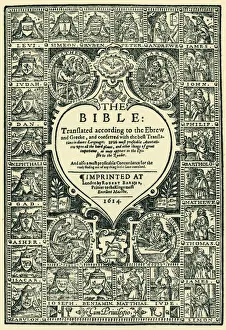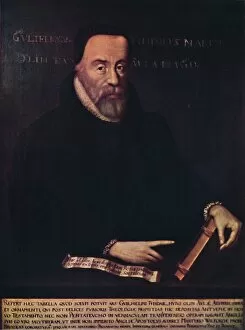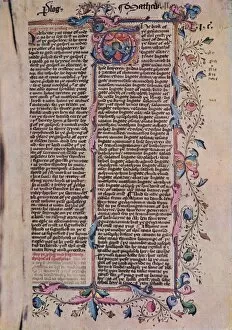The English Bible Collection
"The English Bible: A Journey through Centuries of Faith and Literature" Step back in time to the 16th century, where a remarkable man named William Tyndale was born
All Professionally Made to Order for Quick Shipping
"The English Bible: A Journey through Centuries of Faith and Literature" Step back in time to the 16th century, where a remarkable man named William Tyndale was born. Born in 1492 and passing away in 1536, Tyndale played an instrumental role in shaping the history of the English Bible. His tireless efforts to translate the scriptures into English laid the foundation for future translations that would touch countless lives. Fast forward to the c16th century, when a significant milestone occurred with the publication of the Geneva Bible's Title Page in 1614. This page, created by an unknown artist, showcased not only religious devotion but also artistic talent that captured hearts across generations. Speaking of artistry, Henry Fitzcook's masterpiece "The Sluggard" from the 19th century (1943) brings biblical wisdom to life through captivating visuals. Similarly, Ford Madox Brown's painting "Elijah Restoring The Widow's Son" transports us to ancient times with its vivid depiction. But it wasn't just artists who were inspired by biblical tales; renowned figures like John Ruskin left their mark too. In his portrait from 1879 (1943), captured by Hubert von Herkomer, we witness Ruskin's deep appreciation for literature and spirituality intertwined. William Blake is another name forever linked with biblical imagery. His thought-provoking piece "The Just Upright Man Is Laughed To Scorn, " dating back to around c1825 (1943), challenges societal norms while drawing on timeless themes found within scripture. As we delve further into history, we encounter William Caxton's awe-inspiring creation - Noah's Ark from 1483 (1947). This artwork showcases both Caxton’s skill as an artist and his reverence for one of humanity’s most enduring stories. Yet amidst this celebration of faith and artistry lies tragedy.



















